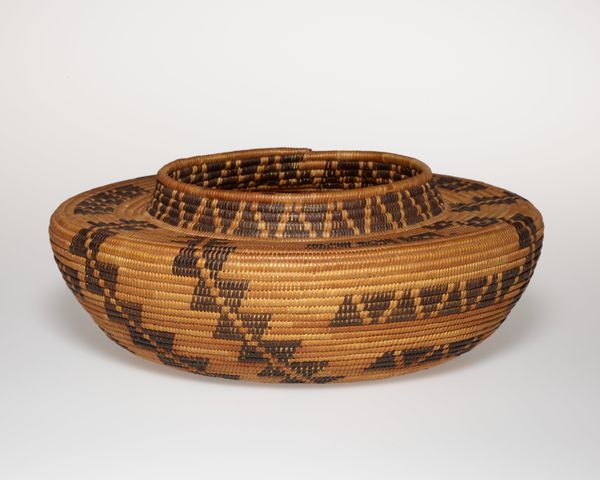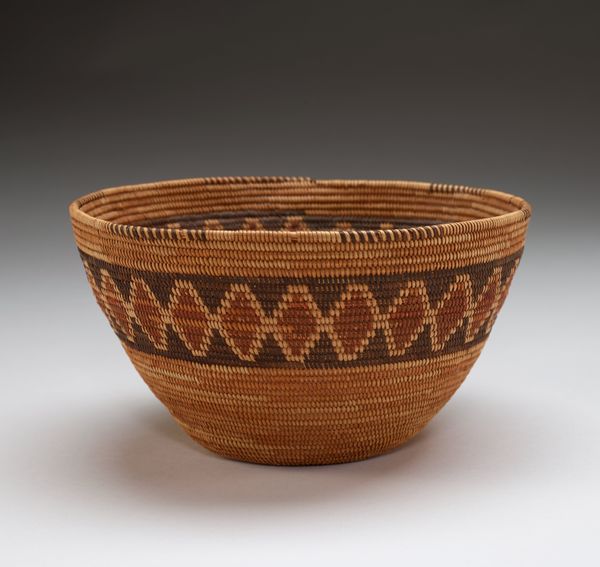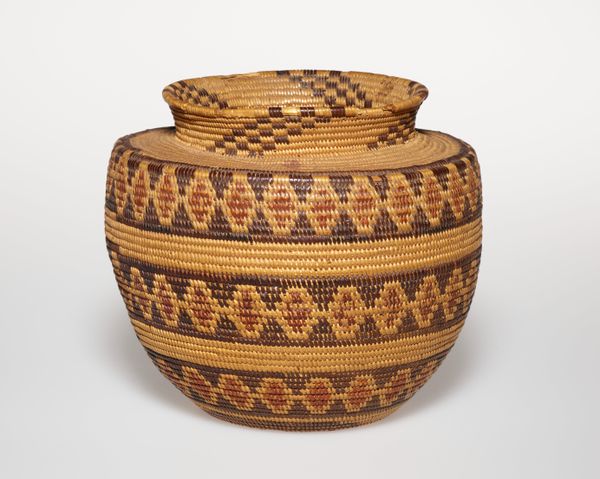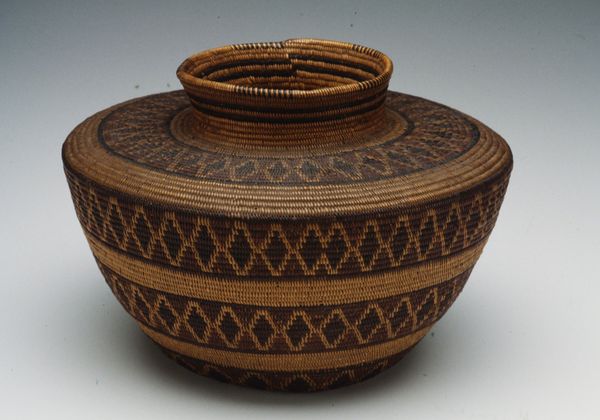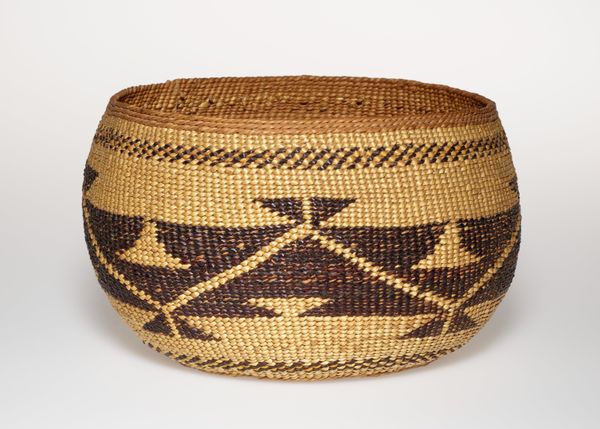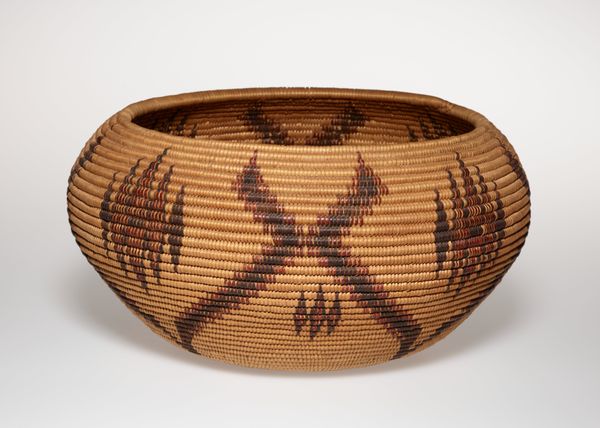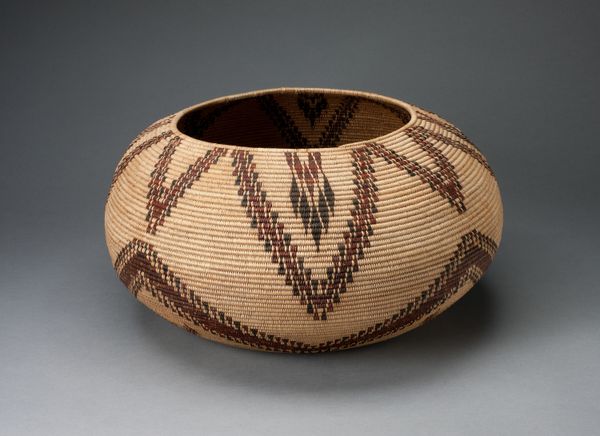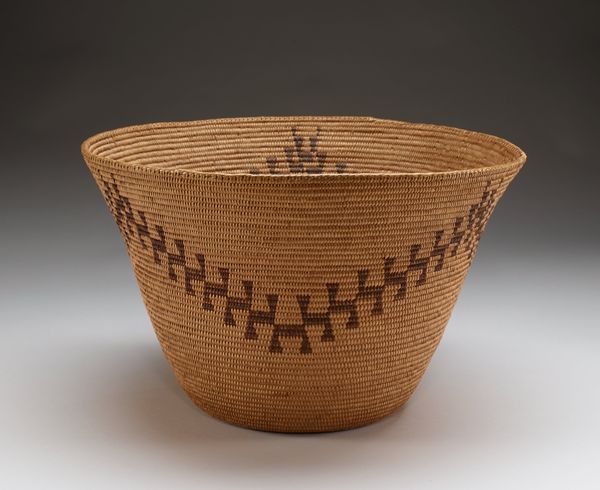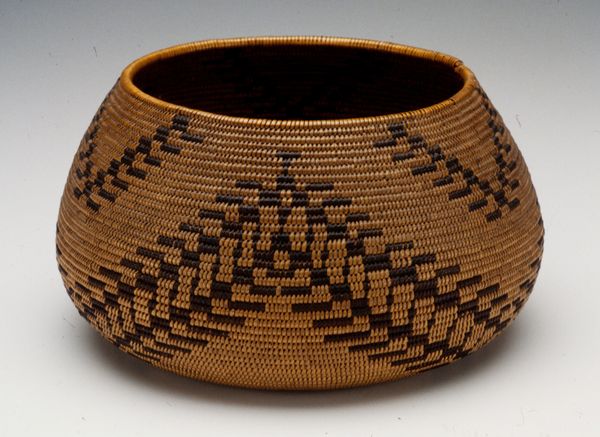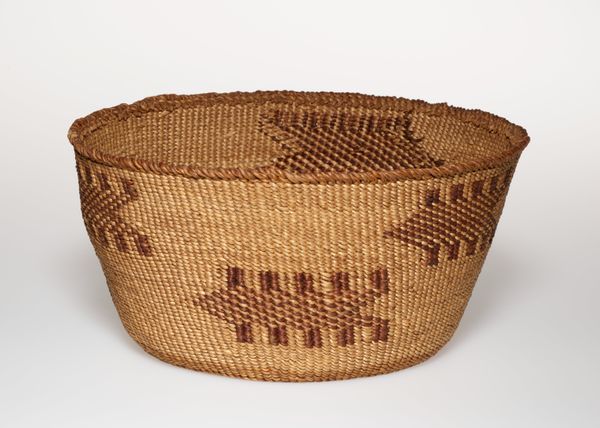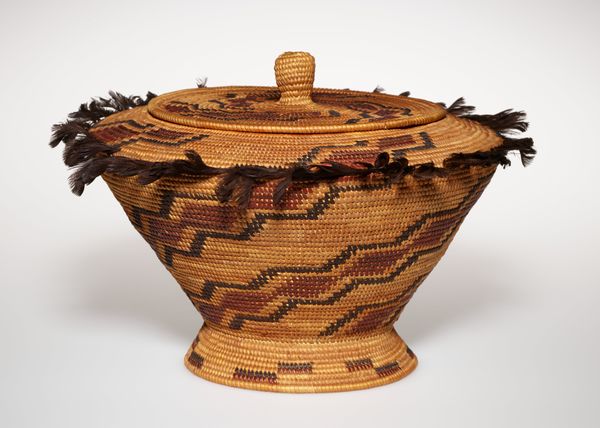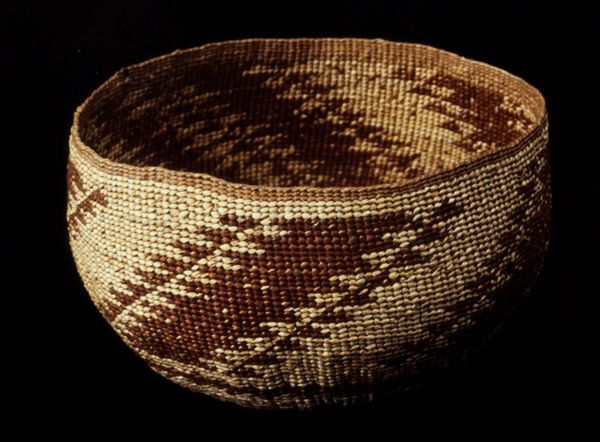
fibre-art, weaving, textile
#
fibre-art
#
weaving
#
textile
#
geometric
#
indigenous-americas
Dimensions: 3 1/2 × 8 13/16 × 8 13/16 in. (8.89 × 22.38 × 22.38 cm)
Copyright: Public Domain
Curator: I find this textile basket compelling; there's a tactile warmth emanating from it. What do you think? Editor: Absolutely, it's so beautifully crafted. We're looking at a Yokuts basket dating from around 1900 to 1920, here at the Minneapolis Institute of Art. Curator: The repeated geometric designs call to mind enduring motifs, universal forms speaking across millennia. Do the diamond patterns have significance within Yokuts culture? Editor: Well, without specific documentation on this particular piece, it's hard to say definitively. But we can infer connections to Yokuts cosmology. Diamond patterns are sometimes associated with concepts of the earth, or pathways between worlds, it also could just be that particular artist’s idea for beauty. Curator: So these shapes and forms create not only visual harmony, but perhaps a conceptual framework through symbols we only partly grasp? Editor: Precisely. And the function also matters. It suggests community, collective labour, women’s work specifically; even, you know, economics and trade through art. Curator: The close weave is also a significant aesthetic decision. I suspect that is born as much from intention as technical mastery? Each woven element builds towards a robust whole, much more than the sum of the components. It’s beautiful. Editor: I couldn't agree more. Considering the colonial contexts that existed during this piece’s creation adds layers of complexity to how we interpret this seemingly simple container. How have these traditions survived? Curator: Absolutely, it reminds me that physical forms preserve a type of consciousness. Editor: The act of creating, then, becomes an assertion, a silent proclamation of enduring identity in times of fracture. I wonder where the next generations will take these practices. Curator: The artistry speaks, even across time. Perhaps the beauty in a basket speaks louder than many written words, doesn’t it? Editor: Yes, perhaps it does.
Comments
No comments
Be the first to comment and join the conversation on the ultimate creative platform.
